
Biomedical Engineering at SEAS
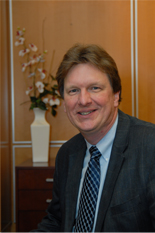 Biofluid Dynamics Lab:
The Biofluid Dynamics Lab (BDL) is directed by Professor Michael Plesniak. Research in the BDL focuses on experimental in vitro
investigations of unsteady, viscous physiological flows. Most processes within the body involve laminar, or non-turbulent fluid
flow, but aeroacoustics of speech and pathological blood flow through arteries are rare exceptions that offer a wealth of
challenging fluid dynamics issues. Current research includes the study of secondary flows caused by curvatuire in the
vasculature and their interaction with arterial stents, and the biophysics of human speech production, including the
effects of pathologies such as polyps. You may also want to learn more about GW's
Center for Biomimetics and Bioinspired Engineering (COBRE).
Biofluid Dynamics Lab:
The Biofluid Dynamics Lab (BDL) is directed by Professor Michael Plesniak. Research in the BDL focuses on experimental in vitro
investigations of unsteady, viscous physiological flows. Most processes within the body involve laminar, or non-turbulent fluid
flow, but aeroacoustics of speech and pathological blood flow through arteries are rare exceptions that offer a wealth of
challenging fluid dynamics issues. Current research includes the study of secondary flows caused by curvatuire in the
vasculature and their interaction with arterial stents, and the biophysics of human speech production, including the
effects of pathologies such as polyps. You may also want to learn more about GW's
Center for Biomimetics and Bioinspired Engineering (COBRE).
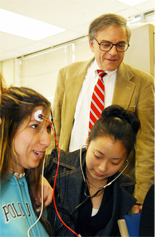 Medical Image Analysis Laboratory: The Medical Image Analysis Laboratory, directed by Professor Murray Loew, conducts research
into methods to enhance, display, combine, and extract diagnostic information from, medical images and signals. We develop techniques
in one to four dimensions for high-accuracy image registration, tissue characterization, and disease detection using both conventional
(MRI, CT, PET, ultrasound) and emerging (optical coherence tomography, infrared, impedance) imaging modalities.
Much of the research is conducted in collaboration with clinicians to ensure that the results have clinical value.
Our registration methods now are being applied also to the analysis of hyperspectral images of works of art, with the
goal of mapping the composition of artists' paints at high spatial resolution. Read more about
Professor Loew.
Medical Image Analysis Laboratory: The Medical Image Analysis Laboratory, directed by Professor Murray Loew, conducts research
into methods to enhance, display, combine, and extract diagnostic information from, medical images and signals. We develop techniques
in one to four dimensions for high-accuracy image registration, tissue characterization, and disease detection using both conventional
(MRI, CT, PET, ultrasound) and emerging (optical coherence tomography, infrared, impedance) imaging modalities.
Much of the research is conducted in collaboration with clinicians to ensure that the results have clinical value.
Our registration methods now are being applied also to the analysis of hyperspectral images of works of art, with the
goal of mapping the composition of artists' paints at high spatial resolution. Read more about
Professor Loew.
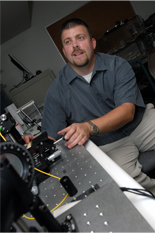 Laboratory for Applications of MEMS in Medical Imaging: In our laboratory we work in a wide variety of areas, such as MEMS
actuators in ultrasound and optical imaging, medical image analysis including early cancer detection in optical images, and analysis
of fMRI images. We also work in several areas of multimodality imaging and treatment; among these are the development of probes
that combine optical coherence tomography (OCT) for early cancer detection and cold plasmas for cancer treatment. Other areas
of interest involve the combination of acoustic and optical imaging for multimodal epithelial tissue imaging. Read more about the lab's director,
Professor Jason Zara.
Laboratory for Applications of MEMS in Medical Imaging: In our laboratory we work in a wide variety of areas, such as MEMS
actuators in ultrasound and optical imaging, medical image analysis including early cancer detection in optical images, and analysis
of fMRI images. We also work in several areas of multimodality imaging and treatment; among these are the development of probes
that combine optical coherence tomography (OCT) for early cancer detection and cold plasmas for cancer treatment. Other areas
of interest involve the combination of acoustic and optical imaging for multimodal epithelial tissue imaging. Read more about the lab's director,
Professor Jason Zara.
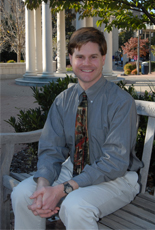 Cardiac Electrophysiology Research Lab:
This research group studies the cause of lethal arrhythmias. Ventricular fibrillation, a lethal cardiac arrhythmia resulting from a
heart attack, is the primary cause of sudden cardiac arrest, and exactly how a heart attack causes a lethal arrhythmia is still unknown.
Professor Matthew Kay's team has developed new ways to re-create heart attacks in the lab using living tissue. Electrophysiological events
that trigger ventricular fibrillation are studied using fast fluorescence imaging of transmembrane potential, intracellular calcium,
and NADH. The studies are providing a better understanding of the causes of sudden cardiac death and new ways to prevent it.
Read more about Professor Kay.
Cardiac Electrophysiology Research Lab:
This research group studies the cause of lethal arrhythmias. Ventricular fibrillation, a lethal cardiac arrhythmia resulting from a
heart attack, is the primary cause of sudden cardiac arrest, and exactly how a heart attack causes a lethal arrhythmia is still unknown.
Professor Matthew Kay's team has developed new ways to re-create heart attacks in the lab using living tissue. Electrophysiological events
that trigger ventricular fibrillation are studied using fast fluorescence imaging of transmembrane potential, intracellular calcium,
and NADH. The studies are providing a better understanding of the causes of sudden cardiac death and new ways to prevent it.
Read more about Professor Kay.
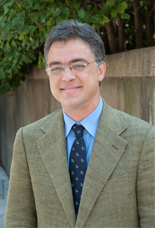 Laboratory
for Computational Physics and Fluid Mechanics: This lab aims to develop high-fidelity modeling tools applicable to multiphysics/multiscsale
flow problems in physical and biological systems. Central to its work is the synergy of mathematical modeling and computational algorithms
coupled to the remarkable advancements in computer hardware technology, which enable us to simulate a wide variety of natural phenomena.
The current thrusts are fluid-structure interactions, multiphase turbulent flows, and multiscale modeling of the blood circulation and
related biomedical devices. An example problem in the latter category is the two-way interaction between the macroscopic flow patterns
and blood elements, which represents the link between fluid mechanics and clinical applications. These computations involve the interactions
of fluid flow with millions of deformable particles, which are only possible on the latest petascale supercomputing platforms.
Read more about the lab's director, Professor Elias Balaras.
Laboratory
for Computational Physics and Fluid Mechanics: This lab aims to develop high-fidelity modeling tools applicable to multiphysics/multiscsale
flow problems in physical and biological systems. Central to its work is the synergy of mathematical modeling and computational algorithms
coupled to the remarkable advancements in computer hardware technology, which enable us to simulate a wide variety of natural phenomena.
The current thrusts are fluid-structure interactions, multiphase turbulent flows, and multiscale modeling of the blood circulation and
related biomedical devices. An example problem in the latter category is the two-way interaction between the macroscopic flow patterns
and blood elements, which represents the link between fluid mechanics and clinical applications. These computations involve the interactions
of fluid flow with millions of deformable particles, which are only possible on the latest petascale supercomputing platforms.
Read more about the lab's director, Professor Elias Balaras.
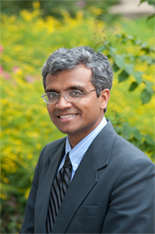 Biofluids and Ultrasonics Lab:
This lab, led by Professor Kausik Sarkar, has three thrust areas of research: 1) diagnostic ultrasound imaging, drug delivery and
therapy--developing bubbles and liposome-based ultrasound contrast agents and targeted drug delivery vehicles; 2) investigating the
therapeutic effects of low-intensity pulsed ultrasound (LIPUS) for cancer and other diseases; and 3) performing high fidelity
simulation of blood rheology, cell adhesion underlying atherosclerosis and inflammatory diseases as well as other heterogeneous
flows of micro- and nanoparticles for drug delivery. The lab's projects are funded by the National Science Foundation and the
National Institutes of Health.
Biofluids and Ultrasonics Lab:
This lab, led by Professor Kausik Sarkar, has three thrust areas of research: 1) diagnostic ultrasound imaging, drug delivery and
therapy--developing bubbles and liposome-based ultrasound contrast agents and targeted drug delivery vehicles; 2) investigating the
therapeutic effects of low-intensity pulsed ultrasound (LIPUS) for cancer and other diseases; and 3) performing high fidelity
simulation of blood rheology, cell adhesion underlying atherosclerosis and inflammatory diseases as well as other heterogeneous
flows of micro- and nanoparticles for drug delivery. The lab's projects are funded by the National Science Foundation and the
National Institutes of Health.
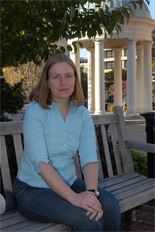 Therapeutic Ultrasound Lab: The research work in this laboratory led by Professor Vesna Zderic focuses on various aspects of therapeutic
ultrasound with special emphasis on ultrasound-enhanced drug delivery. Projects include the application of low-intensity ultrasound to promote
the delivery of antibiotics and anti-inflammatory drugs into the eye and antifungal drugs into nails, high-intensity focused ultrasound therapy
for tumor treatment, modeling of ultrasound effects in various biological tissues, and studies of the effects of ultrasound on modifying
cellular responses such as insulin production from pancreatic beta cells. Read more about
Professor Zderic.
Therapeutic Ultrasound Lab: The research work in this laboratory led by Professor Vesna Zderic focuses on various aspects of therapeutic
ultrasound with special emphasis on ultrasound-enhanced drug delivery. Projects include the application of low-intensity ultrasound to promote
the delivery of antibiotics and anti-inflammatory drugs into the eye and antifungal drugs into nails, high-intensity focused ultrasound therapy
for tumor treatment, modeling of ultrasound effects in various biological tissues, and studies of the effects of ultrasound on modifying
cellular responses such as insulin production from pancreatic beta cells. Read more about
Professor Zderic.
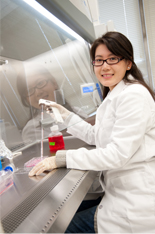 Bioengineering Laboratory for Nanomedicine and Tissue Engineering: Professor Lijie
Grace Zhang's lab applies a range of interdisciplinary technologies and approaches in nanotechnology, stem cells, tissue engineering, biomaterials,
and drug delivery for various biomedical applications. The main ongoing research projects include: designing biologically inspired nanostructured
scaffolds for bone, cartilage, osteochondral and neural tissue regenerations; directing stem cell differentiation in 3-D biomimetic scaffolds for
regenerative medicine; developing sustained drug formulations for long term and controlled drug release at disease or cancer sites; and
investigating novel nano drug delivery systems with cold plasma for cancer treatments.
Bioengineering Laboratory for Nanomedicine and Tissue Engineering: Professor Lijie
Grace Zhang's lab applies a range of interdisciplinary technologies and approaches in nanotechnology, stem cells, tissue engineering, biomaterials,
and drug delivery for various biomedical applications. The main ongoing research projects include: designing biologically inspired nanostructured
scaffolds for bone, cartilage, osteochondral and neural tissue regenerations; directing stem cell differentiation in 3-D biomimetic scaffolds for
regenerative medicine; developing sustained drug formulations for long term and controlled drug release at disease or cancer sites; and
investigating novel nano drug delivery systems with cold plasma for cancer treatments.